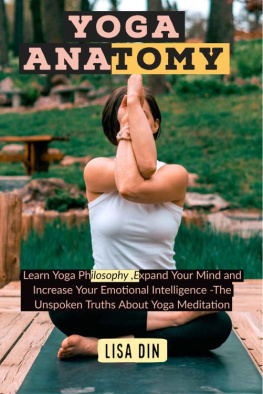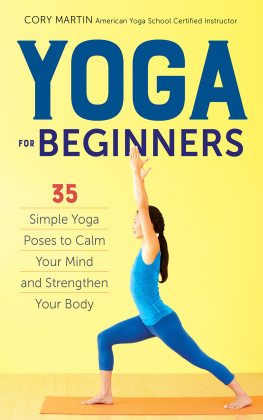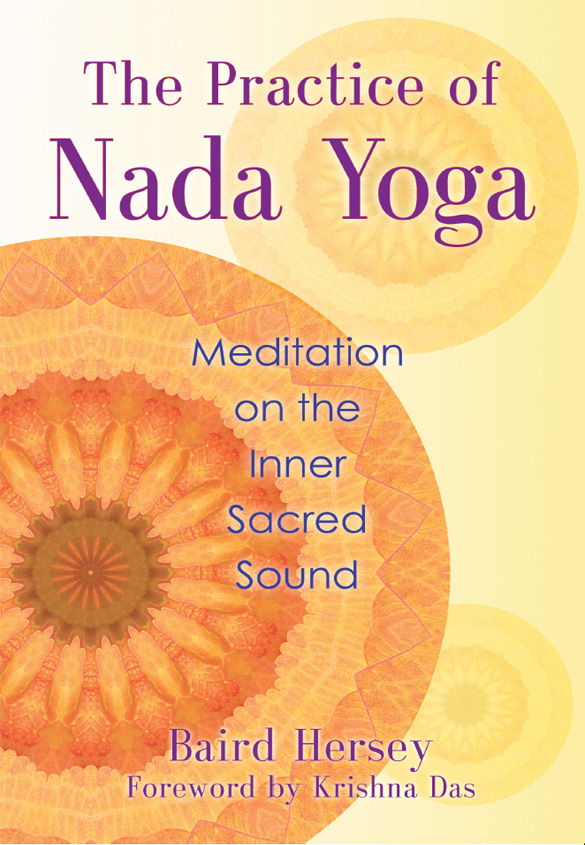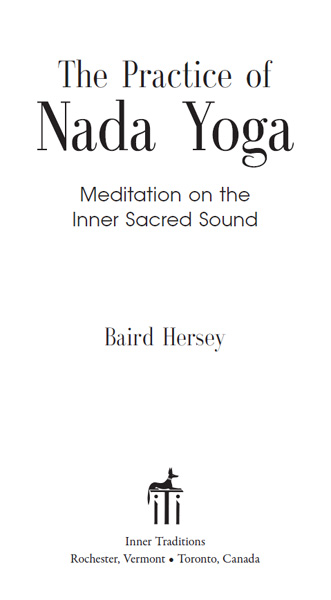Hersey Baird - The practice of nada yoga: meditation on the inner sacred sound
Here you can read online Hersey Baird - The practice of nada yoga: meditation on the inner sacred sound full text of the book (entire story) in english for free. Download pdf and epub, get meaning, cover and reviews about this ebook. City: Rochester;Vermont, year: 2013;2014, publisher: Inner Traditions / Bear & Company, genre: Religion. Description of the work, (preface) as well as reviews are available. Best literature library LitArk.com created for fans of good reading and offers a wide selection of genres:
Romance novel
Science fiction
Adventure
Detective
Science
History
Home and family
Prose
Art
Politics
Computer
Non-fiction
Religion
Business
Children
Humor
Choose a favorite category and find really read worthwhile books. Enjoy immersion in the world of imagination, feel the emotions of the characters or learn something new for yourself, make an fascinating discovery.

- Book:The practice of nada yoga: meditation on the inner sacred sound
- Author:
- Publisher:Inner Traditions / Bear & Company
- Genre:
- Year:2013;2014
- City:Rochester;Vermont
- Rating:5 / 5
- Favourites:Add to favourites
- Your mark:
The practice of nada yoga: meditation on the inner sacred sound: summary, description and annotation
We offer to read an annotation, description, summary or preface (depends on what the author of the book "The practice of nada yoga: meditation on the inner sacred sound" wrote himself). If you haven't found the necessary information about the book — write in the comments, we will try to find it.
Details the teachings on nada yoga from the Hatha Yoga Pradipika with clear, step-by-step instructions to find and hear the inner sacred sound of nada
Explains the 4 levels of sound through a series of practical meditation exercises
Includes instructions for a daily nada yoga meditation practice as well as ways to strengthen your advanced practice
The ancient practice of nada yoga is not complex. It is the yoga of listening. It is a journey from the noise of the external world inward to a place of peace and bliss, to the source of the transformational power of sound--the nada. By meditating on the inner sacred sound of the nada, we can release ourselves from mind chatter and obsessive thinking. We can still the body, quiet the mind, and open the heart to create a state of mind where joy naturally arises.
Sharing his experiential understanding of the classic Hatha Yoga Pradipika, Baird Hersey offers precise, step-by-step instructions on how to find the inner sound of the nada. He explains the first three levels of sound--first, how to truly hear the ordinary sounds of the world around us (vaikhari); second, how to quiet the sounds of the mind (madhyama), such as sound memories and internal dialogue; and third, how to access visual sounds (pashyanti), tapping in to our ability to see sounds and hear colors. Mastering the first three levels prepares one for the fourth level of sound (para), the heart of the practice that connects one to the inner sound of the nada. The author provides detailed exercises to guide you through each level of sound and instructions for a daily nada yoga meditation practice.
Hersey explains that by focusing our minds on this internal sound we reunite our essential self with the eternal and infinite. In this re-union we find bliss in both body and mind, an uplifted spirit, and heightened states of consciousness.
Hersey Baird: author's other books
Who wrote The practice of nada yoga: meditation on the inner sacred sound? Find out the surname, the name of the author of the book and a list of all author's works by series.










 . Please refer to the Audio List on page 207 for the Web addresses of these samples.
. Please refer to the Audio List on page 207 for the Web addresses of these samples.